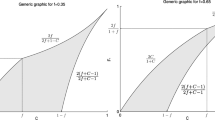Abstract
The area under receiver operating characteristic curve (AUC) is one of the widely used metrics for measuring imbalanced data classification results. Designing multi-objective evolutionary algorithms for AUC maximization problem has attracted much attention of researchers recently. However, most of these methods either search the Pareto front directly, or perform tailored convex hull search for AUC maximization. None of them take the advantage of multi-level knee points found in the process of evolution for AUC maximization. To this end, this paper proposes a multi-level knee point based multi-objective evolutionary algorithm (named MKnEA-AUC) for AUC maximization on the basis of a recently developed knee point driven evolutionary algorithm for multi/many-objective optimization. In MKnEA-AUC, an adaptive clustering strategy is proposed for automatically determining the knee points on the current population. By utilizing the preference of found knee points, the evolution of the population can converge quickly. We verify the effectiveness of the proposed algorithm MKnEA-AUC on 13 widely used benchmark data sets and the experimental results demonstrate that MKnEA-AUC is superior over the state-of-the-art algorithms for AUC maximization.





Similar content being viewed by others
References
Yang Z, Zhang T, Lu J, Zhang D, Kalui D (2017) Optimizing area under the ROC curve via extreme learning machines. Knowl Based Syst 130(15):74–89
Welleck SJ (2016) Efficient AUC optimization for information ranking applications. In: European conference on information retrieval, pp 159–170
Goin JE (1982) ROC curve estimation and hypothesis testing: applications to breast cancer detection. Pattern Recognit 15(3):263–269
Matey JR, Quinn GW, Grother P, Tabassi E, Watson C, Wayman JL (2015) Modest proposals for improving biometric recognition papers. In: IEEE International conference on biometrics theory, applications and systems, pp 1–7
Hong W, Tang K (2016) Convex hull-based multi-objective evolutionary computation for maximizing receiver operating characteristics performance. Memet Comput 8:35–44
Cheng R, Jin Y, Narukawa K, Sendhoff B (2015) A multiobjective evolutionary algorithm using Gaussian process-based inverse modeling. IEEE Trans Evolut Comput 19(6):838–856
Zhang X, Tian Y, Cheng R, Jin Y (2018) A decision variable clustering-based evolutionary algorithm for large-scale many-objective optimization. IEEE Trans Evolut Comput 22(1):97–112
Sun C, Ding J, Zeng J, Jin Y (2016) A fitness approximation assisted competitive swarm optimizer for large scale expensive optimization problems. Memet Comput 10(2):123–134
Tian Y, Cheng R, Zhang X, Cheng F, Jin Y (2018) An indicator based multi-objective evolutionary algorithm with reference point adaptation for better versatility. IEEE Trans Evolut Comput 22(4):609–622
Kupinski MA, Anastasio MA (1999) Multiobjective genetic optimization of diagnostic classifiers with implications for generating receiver operating characteristic curves. IEEE Trans Med Imaging 18(8):675–685
Gräning L, Jin Y, Sendhoff B (2006) Generalization improvement in multi-objective learning. In: International joint conference on neural networks, pp 4839–4846
Provost F, Fawcett T (2001) Robust classification for imprecise environments. Mach Learn 42(3):203–231
Wang P, Tang K, Weise T, Tsang E, Yao X (2014) Multiobjective genetic programming for maximizing ROC performance. Neurocomputing 125(3):102–118
Wang P, Emmerich M, Li R, Tang K, Bäck T, Yao X (2015) Convex hull-based multiobjective genetic programming for maximizing receiver operating characteristic performance. IEEE Trans Evolut Comput 19(2):188–200
Cococcioni M, Ducange P, Lazzerini B, Marcelloni F (2007) A new multi-objective evolutionary algorithm based on convex hull for binary classifier optimization. In: IEEE congress on evolutionary computation, pp 3150–3156
Wang P, Emmerich M, Li R, Tang K, Baeck T, Yao X (2013) Convex hull-based multi-objective genetic programming for maximizing ROC performance. Neurocomputing 125(3):102–118
Ducange P, Lazzerini B, Marcelloni F (2010) Multi-objective genetic fuzzy classifiers for imbalanced and cost-sensitive datasets. Soft Comput 14(7):713–728
Zhang X, Tian Y, Jin Y (2015) A knee point-driven evolutionary algorithm for many-objective optimization. IEEE Trans Evolut Comput 19(6):761–776
Bhowan U, Johnston M, Zhang M, Yao X (2013) Evolving diverse ensembles using genetic programming for classification with unbalanced data. IEEE Trans Evolut Comput 17(3):368–386
Chatelain C, Adam S, Lecourtier Y, Heutte L, Paquet T (2010) A multi-model selection framework for unknown and/or evolutive misclassification cost problems. Pattern Recognit 43(3):815–823
While L, Hingston P, Barone L, Huband S (2006) A faster algorithm for calculating hypervolume. IEEE Trans Evolut Comput 10(1):29–38
Li M, Zheng J (2009) Spread assessment for evolutionary multi-objective optimization. In: International conference on evolutionary multi-criterion optimization, pp 216–230
Deb K, Pratap A, Agarwal S, Meyarivan T (2002) A fast and elitist multiobjective genetic algorithm: NSGA-II. IEEE Trans Evolut Comput 6(2):182–197
Zhang Q, Li H (2007) MOEA/D: a multiobjective evolutionary algorithm based on decomposition. IEEE Trans Evolut Comput 11(6):712–731
Joachims T (2005) A support vector method for multivariate performance measures. In: Proceedings of the 22nd international conference on machine learning, pp 377–384
Deb K, Agrawal RB (1995) Simulated binary crossover for continuous search space. Complex Syst 9(4):115–148
Deb K, Goyal M (1996) A combined genetic adaptive search (geneas) for engineering design. Comput Sci Inform 26(4):30–45
Deb K (2001) Multi-objective optimization using evolutionary algorithms. Wiley, New York
Zhang X, Tian Y, Cheng R, Jin Y (2015) An efficient approach to nondominated sorting for evolutionary multiobjective optimization. IEEE Trans Evolut Comput 19(2):201–213
Tian Y, Cheng R, Zhang X, Jin Y (2017) PlatEMO: a matlab platform for evolutionary multi-objective optimization. IEEE Comput Intell Mag 12(4):73–87
Acknowledgements
This work is supported by National Nature Science Foundation of China (Grant Nos. 61502001, 61502004), Scientific Research Startup Fund for Doctors of Anhui University, by the Academic and Technology Leader Imported Project of Anhui University (No. J01006057). This work was also supported in part by the Natural Science Foundation of Anhui Province (Grant No. 1708085MF166), Humanities and Social Sciences Project of Chinese Ministry of Education (Grant No. 18YJC870004) and Key Program of Natural Science Project of Educational Commission of Anhui Province (Grant No. KJ2017A013).
Author information
Authors and Affiliations
Corresponding author
Additional information
Publisher's Note
Springer Nature remains neutral with regard to jurisdictional claims in published maps and institutional affiliations.
Rights and permissions
About this article
Cite this article
Qiu, J., Liu, M., Zhang, L. et al. A multi-level knee point based multi-objective evolutionary algorithm for AUC maximization. Memetic Comp. 11, 285–296 (2019). https://doi.org/10.1007/s12293-019-00280-7
Received:
Accepted:
Published:
Issue Date:
DOI: https://doi.org/10.1007/s12293-019-00280-7




